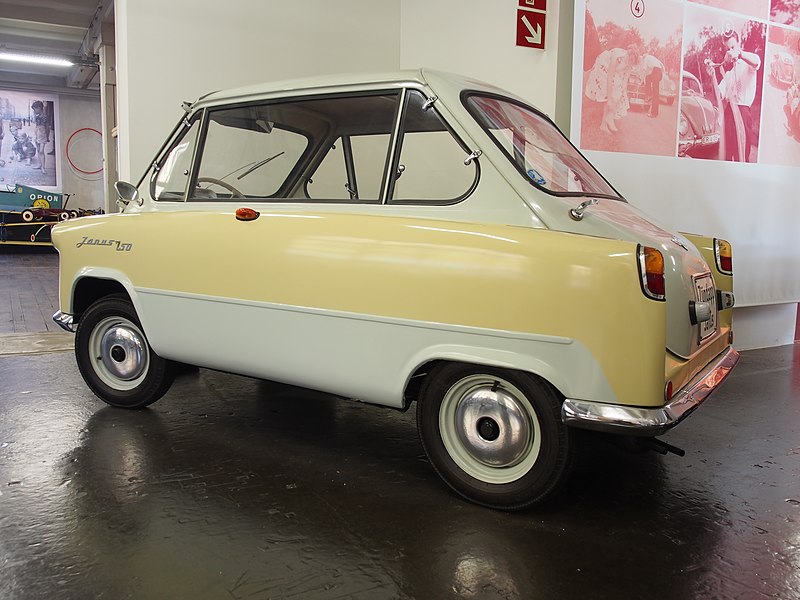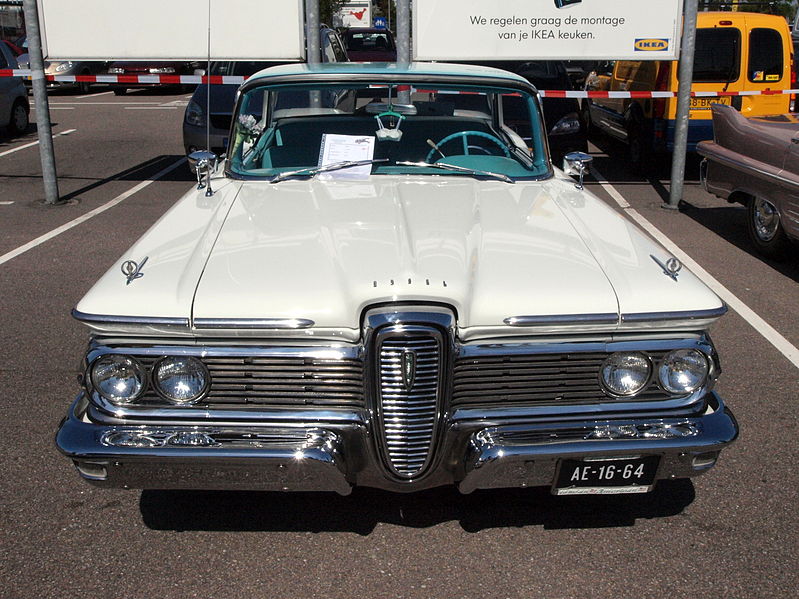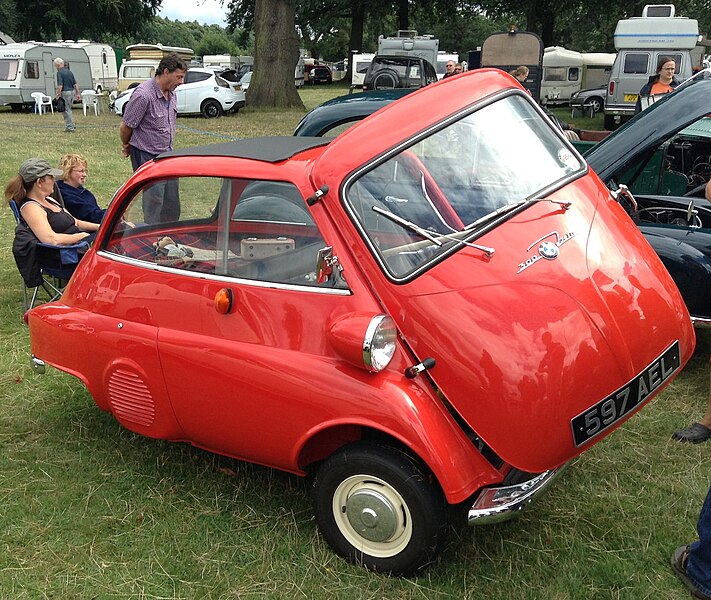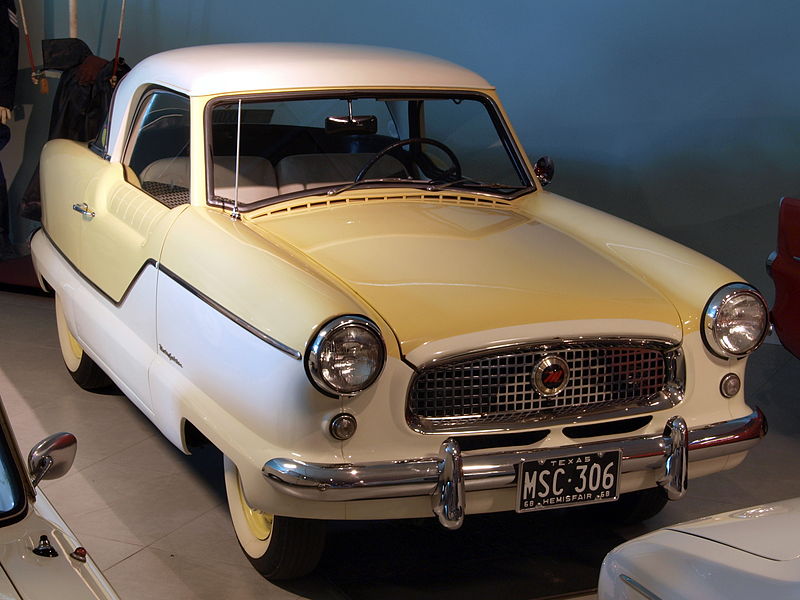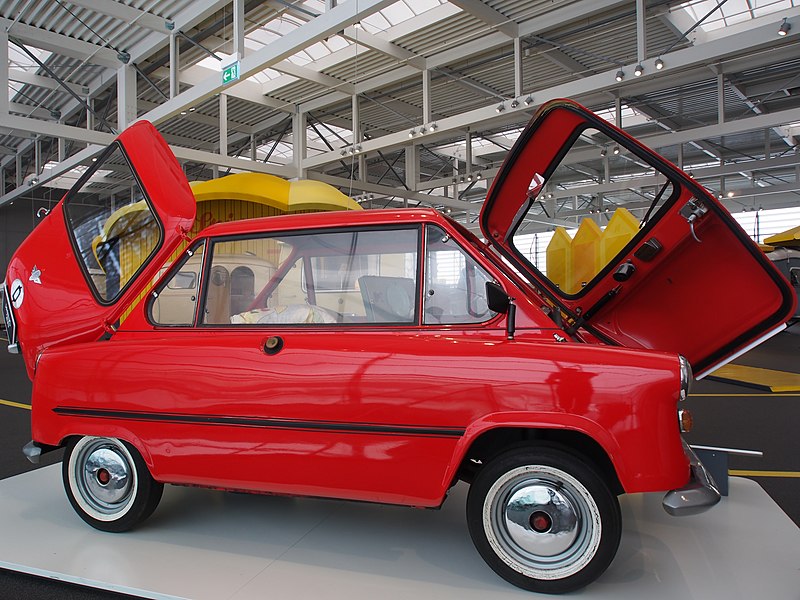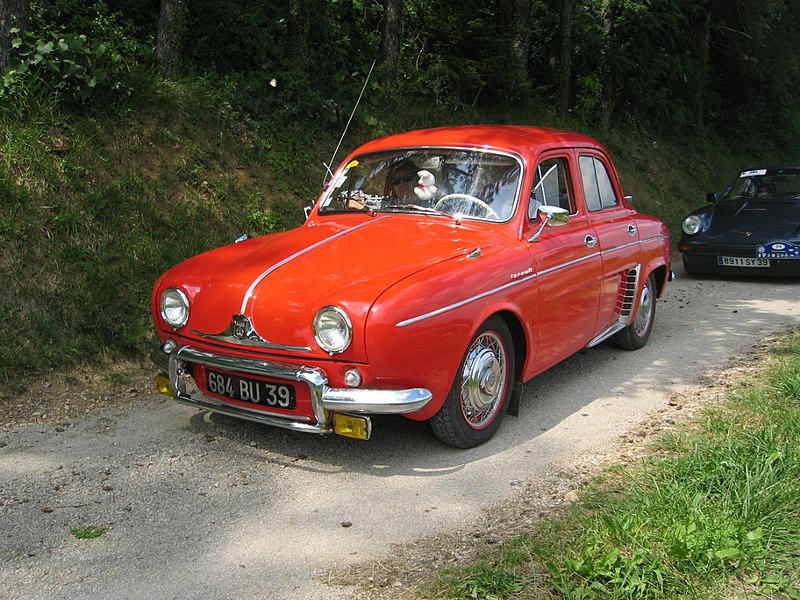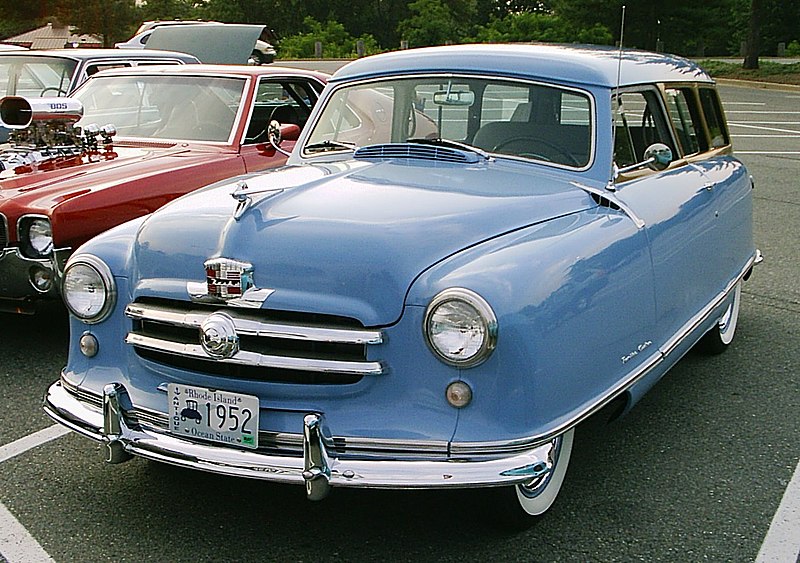In the 1950s, life was simpler, and a lot of innovations paved the way for the modern lifestyle we enjoy today. Fans of the decade might recall the iconic cars of the decade, like the Ford Thunderbird and the Chevrolet Bel Air. Lots of sleek, powerful machines rose during the decade, capturing the world’s imagination.
However, it wasn’t all success stories. Some cars from this period are infamous for their lackluster designs and poor engineering choices. Today, we take a nostalgic journey back to explore the worst cars of the 1950s, vehicles that, for various reasons, failed to leave a positive mark on the automotive world.
1. The 1957 Trabant P50
The Trabant P50, a product of East Germany, is a classic example of design and engineering gone wrong. In the world of cars, the Trabant P50 is remembered for all the wrong reasons – even its home country labeled it practically worthless.
Introduced in 1957, it was meant to be an affordable car for the masses. Unfortunately, it was poorly built and underpowered, with a two-stroke engine that struggled to propel the vehicle at even modest speeds. The Trabant’s body was made from Duroplast, a type of plastic reinforced with cotton or wool, which was both fragile and unappealing in appearance.
This car became the butt of many jokes and had a reputation for being a fuel guzzler, with some blaming it for the country’s economic woes. When a car is associated with causing a recession, that’s definitely not a good sign
2. The 1958 Edsel Corsair
Ford’s Edsel Corsair is often cited as one of the biggest flops in automotive history. Launched with great fanfare in 1958, it was plagued by a range of problems from the outset. The Edsel’s release was a disaster. It was a hodgepodge of parts from Ford and other cars, marketed as something new and exciting.
Its styling, notably the “horse-collar” grille, was controversial and widely criticized. With its wide-set headlights and unusual grille, the peculiar front end drew unfavorable comparisons, while the large quarter panels seemed to overwhelm the car’s rear. Seen from the side, especially the convertible, one might wonder about its structural integrity.
Additionally, the Edsel suffered from mechanical issues and poor build quality. Just two years after its launch, Ford decided to discontinue the brand.
3. The 1957 King Midget Model III
Every so often, a car comes along that aims to shake up the auto world. That was the goal for Midget Motors with their King Midget Model III. It was an ultra-compact car marketed as the “World’s Most Economical Car.”
However, it turned out to be a glorified golf cart – more of a quirky, novelty ride than an everyday car. While it stood out with its unique design, many found its tiny size a bit too limiting for daily use. The vehicle lacked power, comfort, and safety features, making it impractical for anything beyond short, leisurely drives.
4. The 1955 BMW Isetta
The Isetta, originally from Iso and later adopted by BMW, was a bold step in car design. While it is beloved by some for its unique, quirky design, it was fundamentally flawed as a car. This microcar’s front-opening door was a safety hazard, as it could trap passengers inside in the event of a collision.
Its single-cylinder engine provided minimal power, making it unsuitable for high-speed or long-distance travel. The Isetta’s tiny size and unusual appearance also limited its appeal.
Interestingly, Iso, an Italian company, designed the Isetta after WWII, possibly using spare refrigerator parts for inspiration (hence the original design featuring unique headlights and windows). Thankfully, Iso passed this bubble car onto BMW and moved on to create more aesthetically pleasing designs.
5. The 1950 Crosley Hotshot
Crosley, known for its budget-friendly cars, tried to boost its image with the Hotshot, a small sports car. The company aimed it to be a sporty, affordable roadster.
Unfortunately, the result was not what Crosley had hoped for. The Hotshot was criticized for its weak engine, managing just 24 horsepower, and its overall performance. It also faced reliability problems, often breaking down, and the engine was prone to overheating. The build quality, too, was under scrutiny, with many pointing out its subpar craftsmanship.
Overall, it did not live up to its sporty aspirations, with a lackluster acceleration and handling that left much to be desired. Not so much of a hot shot, eh?
6. The 1954 Nash Metropolitan
The Nash Metropolitan was an American car with a British heart, designed as a compact city vehicle. Available from 1954 for about a decade, it sold nearly 100,000 units. Despite being popular, it was often criticized for being uncomfortably cramped.
The car was too small for the American market’s tastes, as the cramped interiors and limited storage space made it uncomfortable and impractical. Performance-wise, the Metropolitan struggled with a lack of power and sluggish handling, which made it unsuitable for the expanding American highways. The tiny 1.2L engine also contributed to its underwhelming reputation.
7. The 1952 Henry J Corsair
The Henry J Corsair, produced by Kaiser-Frazer, was intended to be a budget-friendly car for the post-war market. However, to keep costs down, the car was stripped of many features considered standard, like a trunk lid or a glove compartment.
The build quality suffered as a result, with the car gaining a reputation for being cheaply made. It faced serious issues with its performance – or lack thereof. With an underpowered engine and 68-horsepower four-cylinder motor, drivers were in for a rough ride.
8. The 1957 Zündapp Janus
The Zündapp Janus stands out as one of the 1950s’ most unusual vehicles. It was Zündapp’s sole venture into car making! The Janus was known for its small, bubble car design, seating four people in a novel way with doors at both the front and the rear and no side doors. This setup made getting in and out easy and created a fun, face-to-face seating arrangement.
However, its compact size and limited body protection raised concerns about safety in collisions, and it wasn’t the most comfortable for long drives. The car was underpowered, with a small engine located under its rear seat, leading to poor performance. Additionally, the Janus’ unusual seating arrangement was not well-received, making it a commercial failure.
10. The 1956-1967 Renault Dauphine
Famous for its lack of power, both in terms of performance and sales, Renault Dauphine didn’t impress many. Dubbed the “Worst Car of the Millennium” and one of the “20 Dumbest Cars of All Time,” it’s safe to say the Renault Dauphine wasn’t a crowd favorite.
The Dauphine struggled on the highways due to its small engine, offering a mere 27 horsepower from its 0.6L motor. This wasn’t its only drawback – the car’s design led to oversteering issues, making it a challenging and sometimes risky drive, particularly for those not used to its quirks. If you’re curious, though, you might find one for around $15K – $20K.
11. The 1956 DeSoto Adventurer
DeSoto’s Adventurer was marketed as a blend of luxury and high performance. Yet, it struggled to live up to these claims.
One major issue was its weight – tipping the scales at over 4100 pounds. Its engine, while fairly strong, didn’t deliver the thrilling performance that was advertised. Add to this its subpar fuel efficiency during rising gas prices, and it’s clear why it had trouble standing out.
The Adventurer also faced challenges in establishing a distinct identity or a loyal fan base, further hindering its success.
12. The 1950 and 1954 Nash Rambler
In 1950, the Nash Rambler made a splash in the car world. It was a hit with those who appreciated its compact size, which translated to fuel efficiency and ease of city driving. It stood out as one of the first compact cars tailored for the American market, hinting at a future trend towards smaller, more economical vehicles.
However, the Nash Rambler wasn’t without its issues. Its performance was a major letdown. The early models, particularly those with smaller engines, were notorious for their sluggish acceleration and lack of power, struggling on highways with their 2.8L inline-six engines.
The second-generation Nash Rambler managed to be even less appealing than the 1950 original. Nash’s attempt to combine a sedan with a flat-topped cargo area resulted in a rather unattractive wagon. This design choice made it clear Nash was aiming for budget-friendly production.
Interestingly, this wagon style seemed to have a lasting influence, as evidenced by Infiniti’s QX56 half a century later, which adopted a similar look – not any more successful in the modern era.
13. The 1950 Studebaker Champion
For a glimpse of what 1950s cars might have looked like without the chrome craze, check out the Studebaker Scotsman. This no-frills little convertible is known for being both practical and affordable. However, it took simplicity to the extreme, featuring a basic steel grille, painted hubcaps, and simple door panels sans armrests.
Performance wasn’t impressive either, with a modest engine and vacuum windshield wipers that barely worked under load. The fourth-gen model, in particular, came with a six-cylinder engine that struggled to hit 60 mph, leaving a bit to be desired in terms of performance. Even a heater was optional, and radios weren’t offered at all. Plus, its name was a nod to the less-than-ideal attitudes of the time, reminding us that not everything about the ’50s was great.
14. The 1950 Muntz Jet
The Muntz Jet was an attempt at a luxury sports car by Earl “Madman” Muntz. While it had a certain flair and featured innovative elements like a removable hardtop, it was plagued by high production costs and quality control issues.
The Jet’s heavy weight and underpowered engine resulted in a mediocre performance, failing to compete with other sports cars of the era. High production costs led to a high sale price, which further limited its appeal and market success.
15. The 1953 Kaiser Dragon
The Kaiser Dragon, released in 1953, was an attempt at luxury that missed the mark. It featured a unique bamboo vinyl roof and lavish interior fittings, including dragon-patterned upholstery.
However, these flamboyant design choices did not resonate with consumers, and the car’s performance was underwhelming. Its high price tag also contributed to its poor sales, making it a rare sight on the roads.
Conclusion
These examples of the worst cars of the 1950s provide an intriguing glimpse into an era where the automotive industry was experimenting with new ideas and technologies. While these vehicles were commercial failures, they each contributed to the evolution of car design and manufacturing in unique ways. They remind us that innovation is often a process of trial and error, where not every attempt is a success.

